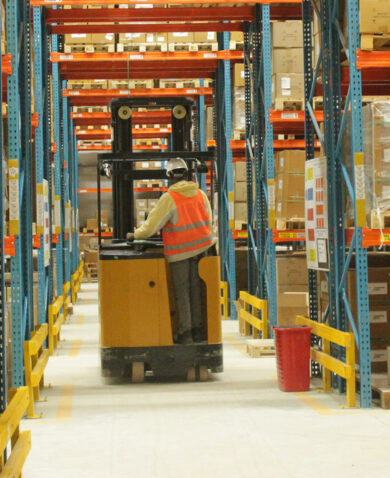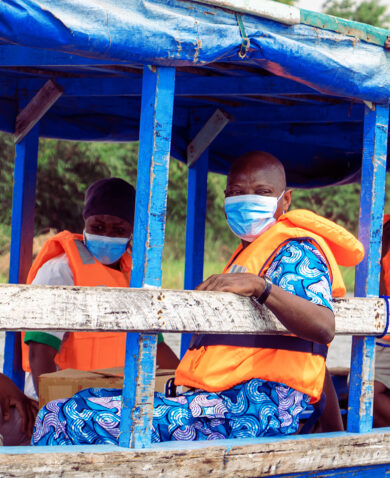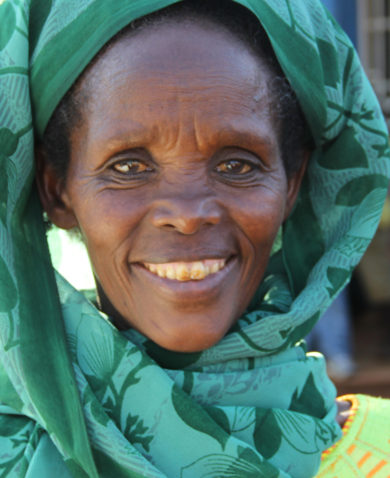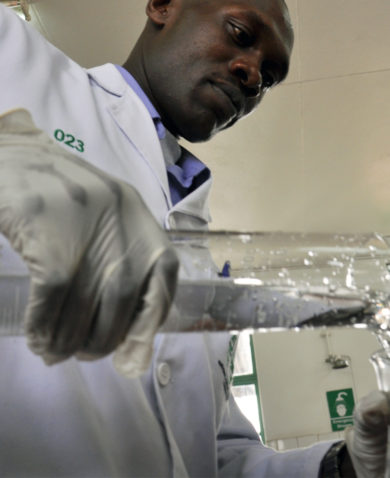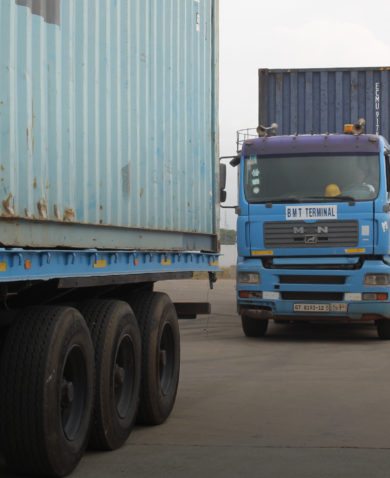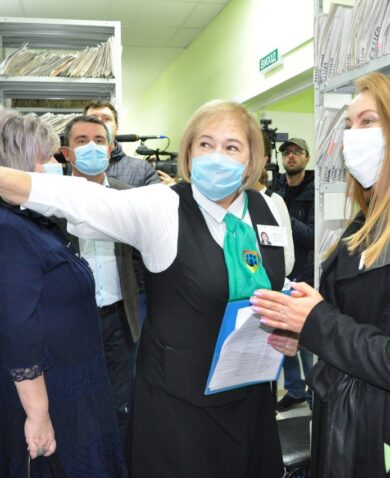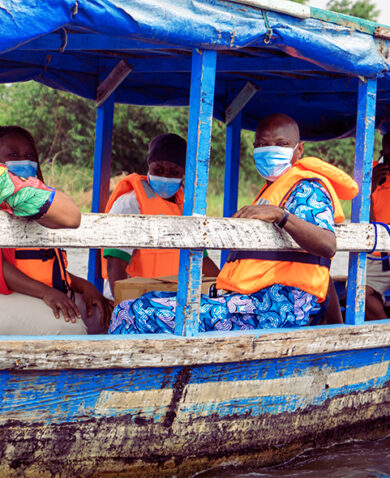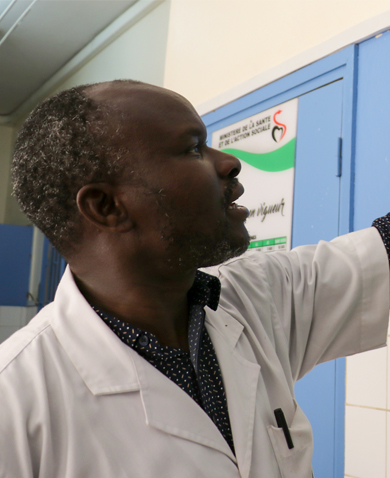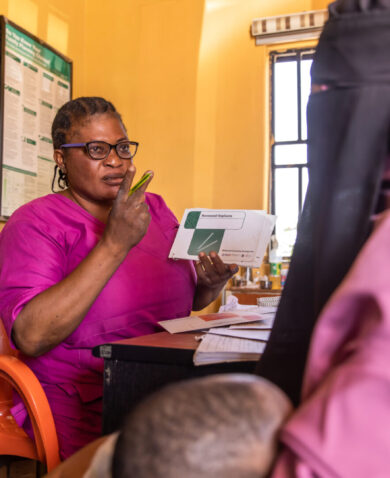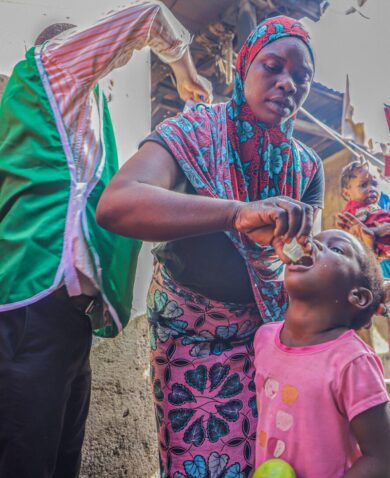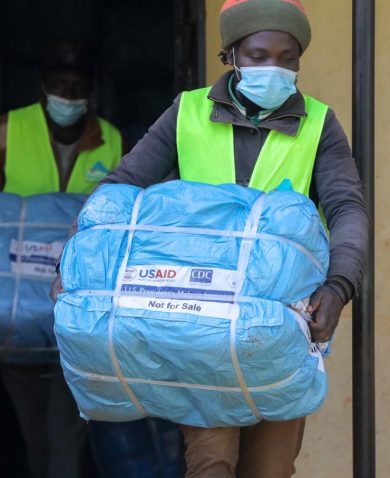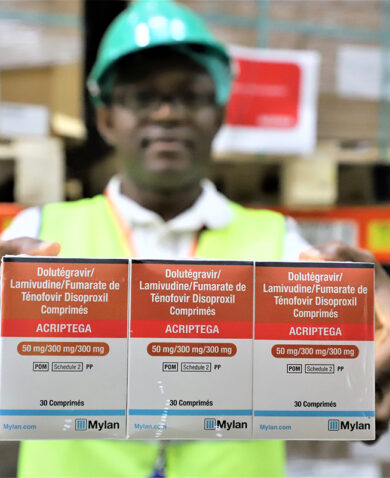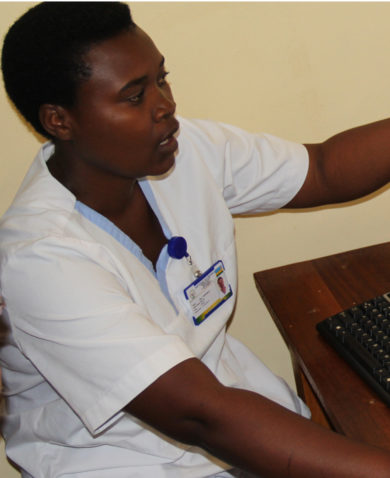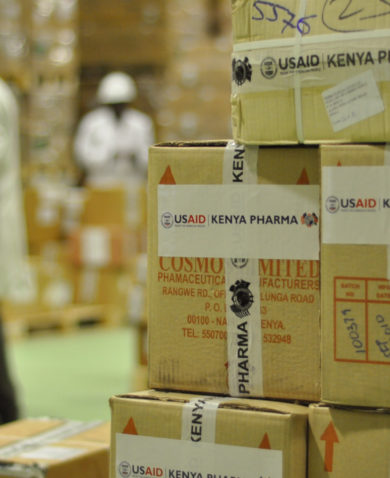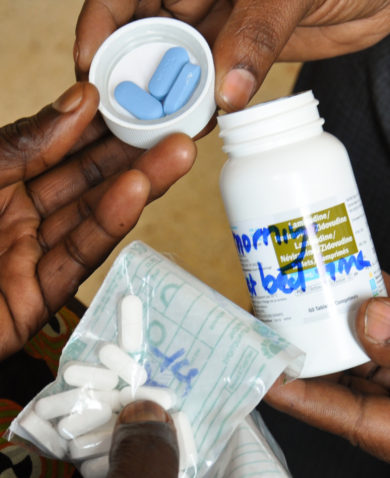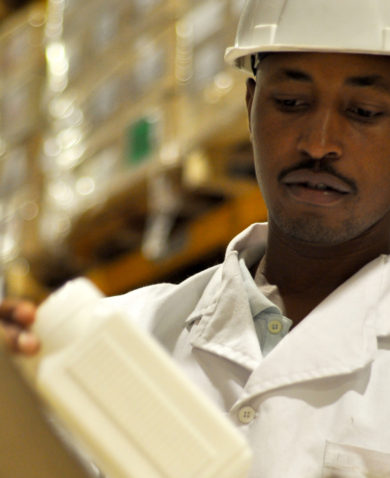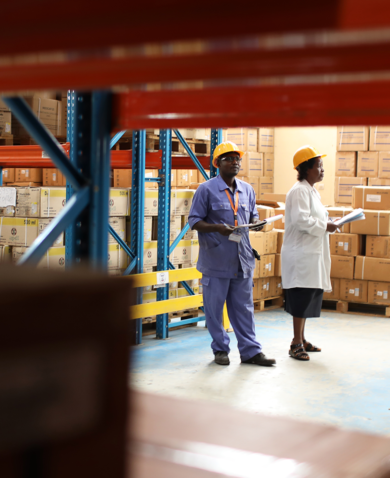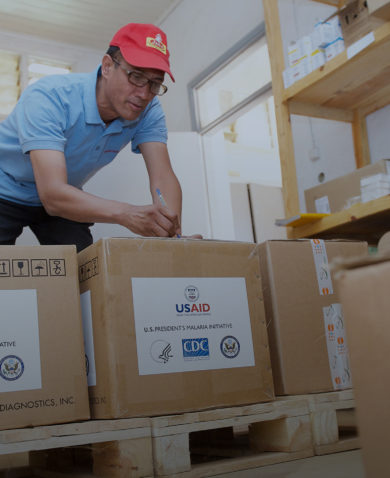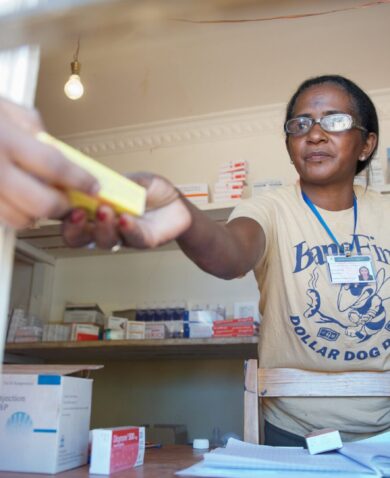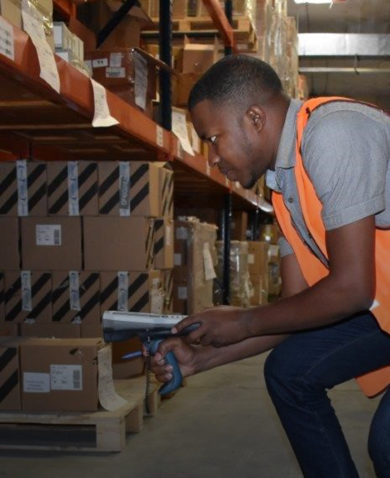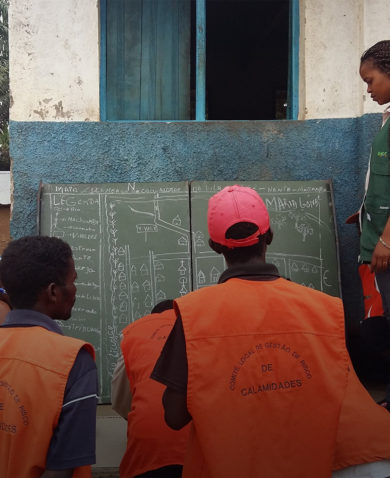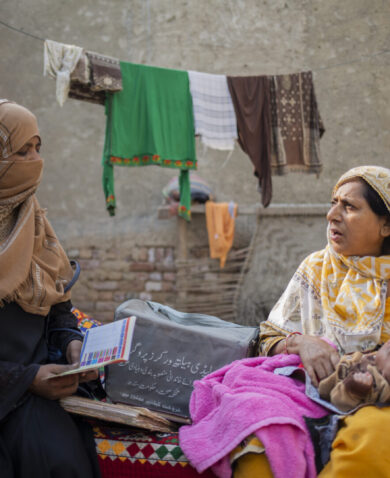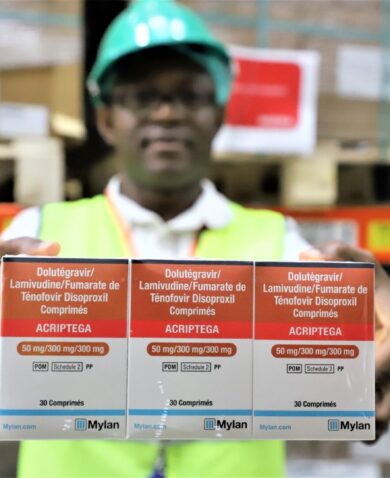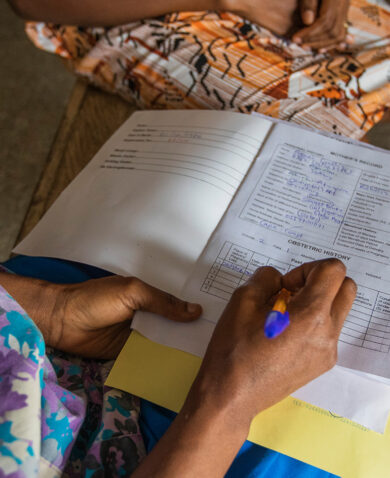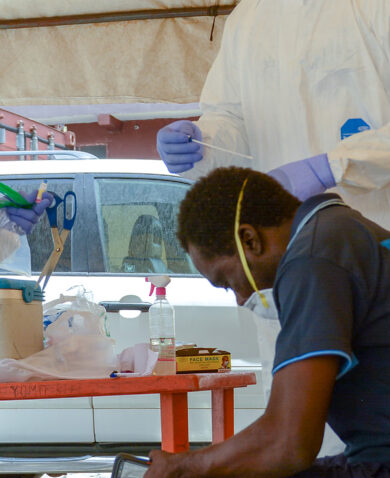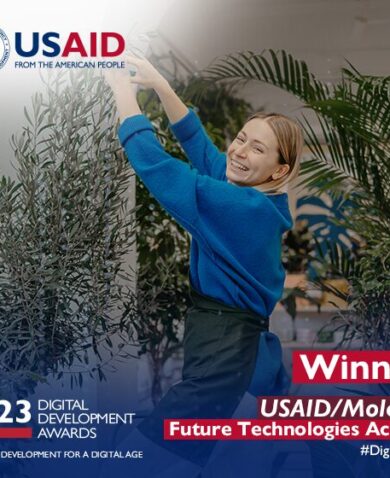
Ukraine: Collaborating to Successfully Deliver HIV Medication
October 18, 2022 | 4 Minute ReadAfter the war broke out in Ukraine, people were not only made vulnerable by the conflict itself, but also by being displaced and losing access to lifesaving medicines.
Taking managed risks to achieve a desired outcome is a given for successful supply chain work, but risks elevate to a whole other level when working in a country at war. That was the case this year, when Chemonics helped deliver nearly 210,000 bottles of life-saving antiretrovirals (ARVs) into Ukraine, enough to ensure that roughly 150,000 people living with HIV could continue receiving essential treatments and avert the possibility of missing doses and becoming drug resistant.
The USAID Global Health Supply Chain Program-Procurement and Supply Management (GHSC-PSM) project, implemented by Chemonics, managed the effort to supply Ukraine through a careful balance of risk assessment (which started before the war broke out in February 2022), preparing a strategic response, and innovating as it had done in other conflict areas like Afghanistan, Syria, and Yemen. In this case, innovating meant relying on Chemonics and GHSC-PSM leadership and expertise to move forward with delivering the ARVs despite uncertainty about the path ahead.
“We spent a lot of time reaching out and keeping our finger on the pulse, talking amongst the team, asking questions, and then when USAID said go and purchase these ARVs, we just ramped that up,” said GHSC-PSM Deliver Return Manager Gordon Brown. “It went from once-a-week communication into daily communication with multiple 3PLs [third-party logistics providers]. We had to leverage all the resources available to us, including liaising and collaborating with other organizations such as the World Food Programme, World Health Organization, and others to find viable solutions.”
Assessing Risk, Innovating Solutions
The emergency delivery of ARVs to Ukraine became necessary because private pharmaceutical companies could not deliver supplies to Ukraine’s Ministry of Health due to force majeure, a clause that excuses a party from fulfilling contractual obligations because of unforeseen circumstances beyond their control, such as a war. Insuring deliveries is more difficult under force majeure. As GHSC-PSM planned to step in, it weighed several risks:
- Could flights get the ARVs from where they were manufactured in India into Europe, and close to Ukraine, despite COVID-19 impacts on flight capacity?
- Could the project get the deliveries insured in an uncertain landscape under force majeure?
- How long would the ARVs sit in Poland as the government there worked out its aid framework for assisting Ukraine, and how much would that storage cost GHSC-PSM?
- Were there experienced freight forwarders on the ground who could successfully deliver the ARVs?
- Once in Ukraine, would the commodities get stolen, stranded, or destroyed in the fighting?
Knowing the risks and communicating those risks to USAID in a clear manner were essential to getting USAID’s support and approval.
“We ended up not waiting until the Poland framework had been worked out and we had sufficient information to support our decision to say let’s just get going,” said Colin Credle, director for GHSC-PSM Non-Field Office countries. “To me, that showed not only our decisiveness but the breadth of our knowledge on the ground. The risk was calculated. It’s one thing to run into a burning building and it’s another to be a fireman and to know the risk and precautions to take.”
In this case, innovation took the form of risk-taking based on:
- Finding a way to fly the cargo from India into Warsaw
- Engaging a global freight forwarder with experience delivering commodities into war zones
- Coming together to answer the insurance company’s questions which, when answered satisfactorily, allowed the company to approve the coverage for which GHSC-PSM paid extra
- Minimizing the number of times that the cargo had to either change hands or be handled to help avert the risk that it would be damaged or otherwise compromised
- Delivering the commodities to a trusted recipient in Ukraine
The ARVs were picked up on March 15 in India and were delivered to Kyiv on March 23. “That’s amazingly fast,” Credle said.
Leveraging Partnerships
A crucial element for delivery of the commodities was successful collaboration with partners on the ground.
“Certainly, what I’ve seen in all of this is that you can’t be a single player in this space. There are so many moving pieces, so many contributors,” said GHSC-PSM Director Judith Heichelheim. “And if you can get them going in the same direction, you can really do something incredible.”
The project coordinated closely with the USAID/Ukraine Mission, 100% Life, the Ukrainian Center for Public Health, and multiple logistics partners to get the ARVs into Ukraine, all the way to the central warehouse in Kyiv. Additionally, suppliers stepped up and were willing to divert some of the stock that was allocated to other countries to quickly respond to GHSC-PSM’s requests. These links were crucial to the effort’s success because they were with proven partners, thus helping to reduce the risk of unknowns and lay the groundwork for effectively managing any further risks that arose.
“When the challenges arrive, everyone really does get together,” Brown said. “It’s a collaborative effort and folks really do show the best of this project when they do get together and we break down those silos. But the human element is absolutely critical, whether it’s at 3PL level, whether it’s the folks sitting at the port, loading a container right through to our guys punching a booking through a keyboard here in Washington.”
This is the second of a three-part series on risk and innovation in the global health supply chain. The first part gives an overview of the topic, and the third part looks at building sustainability into the supply chain in Tajikistan during the COVID-19 pandemic.
Posts on the blog represent the views of the authors and do not necessarily represent the views of Chemonics.

